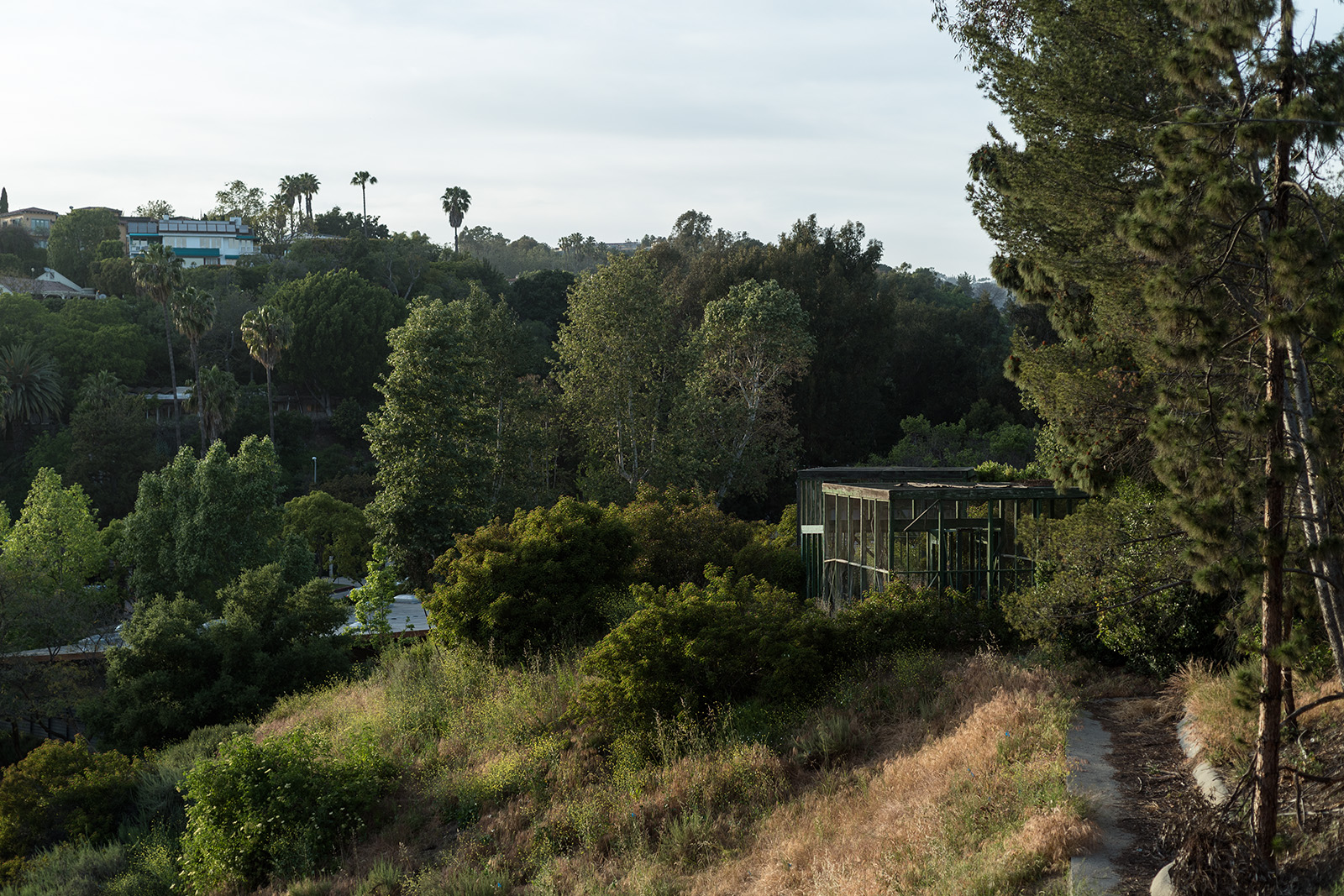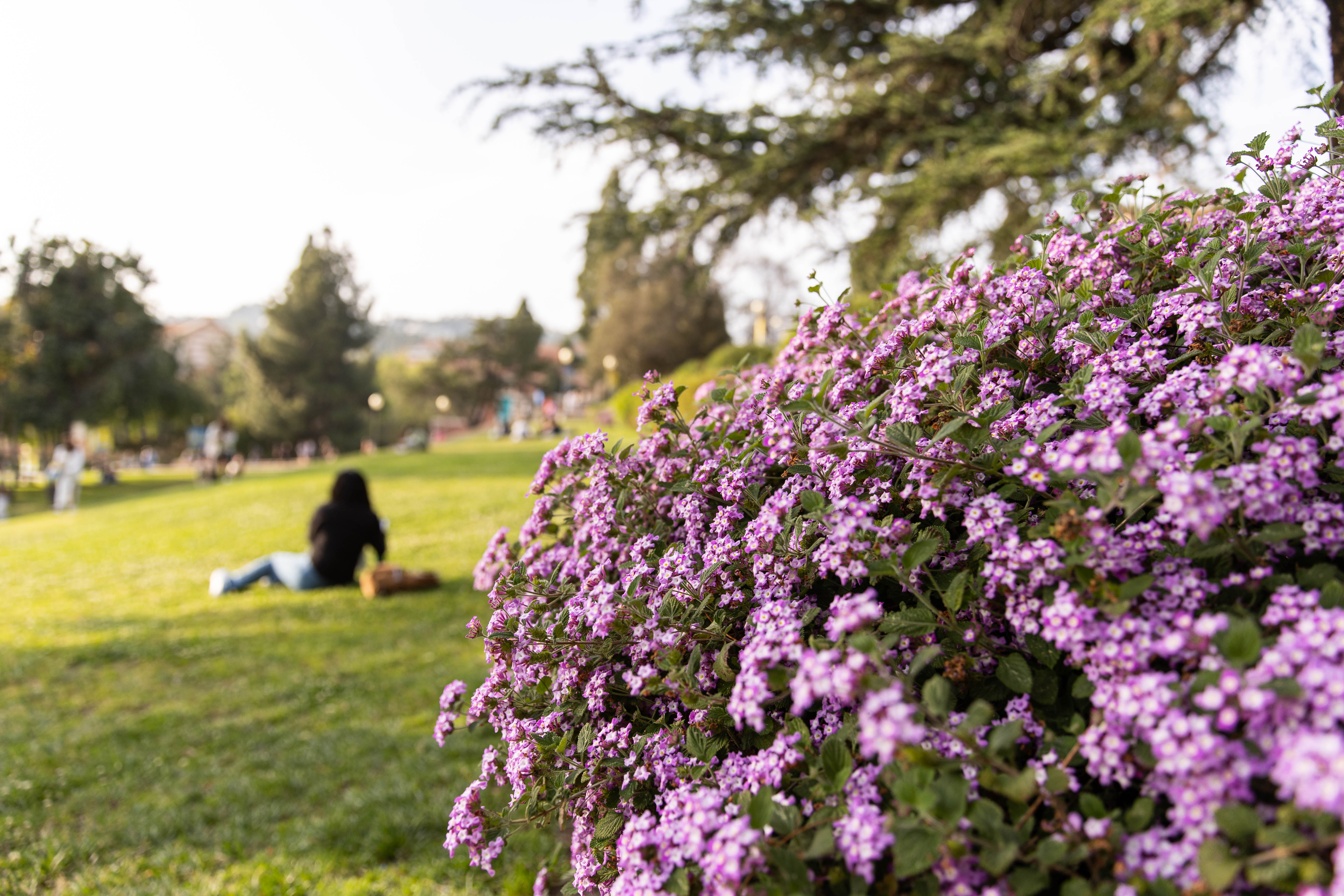Sage Hill provides space for native biodiversity on UCLA campus

Sage Hill is pictured. The area, which is adjacent to Olympic Hall, is the center of a nature reserve. (Daily Bruin file photo)
By Christopher Mancini
Aug. 26, 2023 3:52 p.m.
This post was updated Aug. 27 at 8:35 p.m.
On her days off, Jordan Dixon can be found pulling out weeds from Sage Hill – something she calls one of her favorite memories of the place.
“It was just really nice to be able to do that and just be able to sit and count all the species and all the plants around and everything around you,” said Dixon, a UCLA alumnus.
According to the Institute of the Environment and Sustainability at UCLA, Sage Hill – located behind Olympic Hall – is a natural reserve area used for habitat research and instruction. The reserve’s history is deeply intertwined with that of the UCLA campus as well as the Gabrielino/Tongva peoples whose land the campus is located on, said Andy Kleinhesselink, the reserve’s general manager.
After the rapid development of the campus during the 1970s, Sage Hill became the only area on the UCLA campus with native Californian flora and fauna, Kleinhesselink said. He added that it has also become a space where Native Americans can teach others wildlife preservation techniques passed down from their ancestors who lived there thousands of years ago.
Thomas Gillespie, a geography and environmental science professor, said Sage Hill allows students to see the native biodiversity of California that is not necessarily present on the urban UCLA campus.
“There’s over about 60 native species of plants out there, and then we have the native animals and birds,” Gillespie said. “There’s actually a lot of biodiversity out there.”
Gillespie teaches several classes at Sage Hill for mainly senior undergraduates or doctoral and masters students. Kleinhesselink said one of his goals is to expand the number of classes involved at Sage Hill and open them to younger undergraduates.
Kleinhesselink added that ecology, evolution and behavior students will be working on redesigning trails at Sage Hill as part of a capstone project because the trails are currently not very accessible to students. The trails will then be assessed by expert environmental engineers before being constructed in the space, he said.
Cedric Lee, a UCLA alumnus and arthropodology doctoral student studying centipedes, said uncovering new species at Sage Hill was one of the ways he explored his interest in ecology as an undergraduate student. He said he documented his findings on iNaturalist – an app that helps students identify plants and animals with some visually similar suggestions and share findings with other contributors. One of Lee’s favorite memories was when he found an arthropod at Sage Hill that had never been documented on the platform.
“(I) found this one particular species (of springtail beetle) at (Sage Hill) that really had no images of it,” he said. “That submission gave me chills.”
Dixon said that as part of one of the conservation projects on Sage Hill, she works with Sage Hill’s staff and other undergraduates to remove non-native species, such as weeds, and replace them with native shrubs and grasses.
“It’s fun to mingle while you’re restoring a habit with cool people you wouldn’t find anywhere else,” Dixon added.
Like Lee, Gillespie worked at Sage Hill as a doctoral student and said he credits the undergraduate volunteers with maintaining Sage Hill.
“It’s a big area,” Gillespie said. “It’s pretty, it’s got tons of diversity and, before me, it was just undergraduate students that would maintain it.”
Gillespie added that undergraduates frequently document their work on the Sage Hill Facebook page.
Kleinhesselink said he hopes to expand conservation efforts and enhance teaching at Sage Hill over the next few years. One possibility could be collaborating with UCLA Housing to build a structure for growing native plants, he said.
In addition, Kleinhesselink said he wants to expand the number of student organizations that participate in activities on Sage Hill. For example, the Bruin Birding Club recently started field trips to Sage Hill, he said, adding that the 30 or so species of native birds present in Sage Hill give students interested in birding an accessible place to practice their skills.
Kleinhesselink also said that beyond being an important space for teaching and research, Sage Hill is also prized by students as a place to hang out. He added that students have persisted in trying to make use of the space, installing benches despite resistance from Sage Hill management.
For now, however, the focus will be on maintaining the natural aspects of Sage Hill, Gillespie said.
“Every time that we go out there and do something that makes the place a little more native and increases the biodiversity, it’s just always exciting,” he said.



